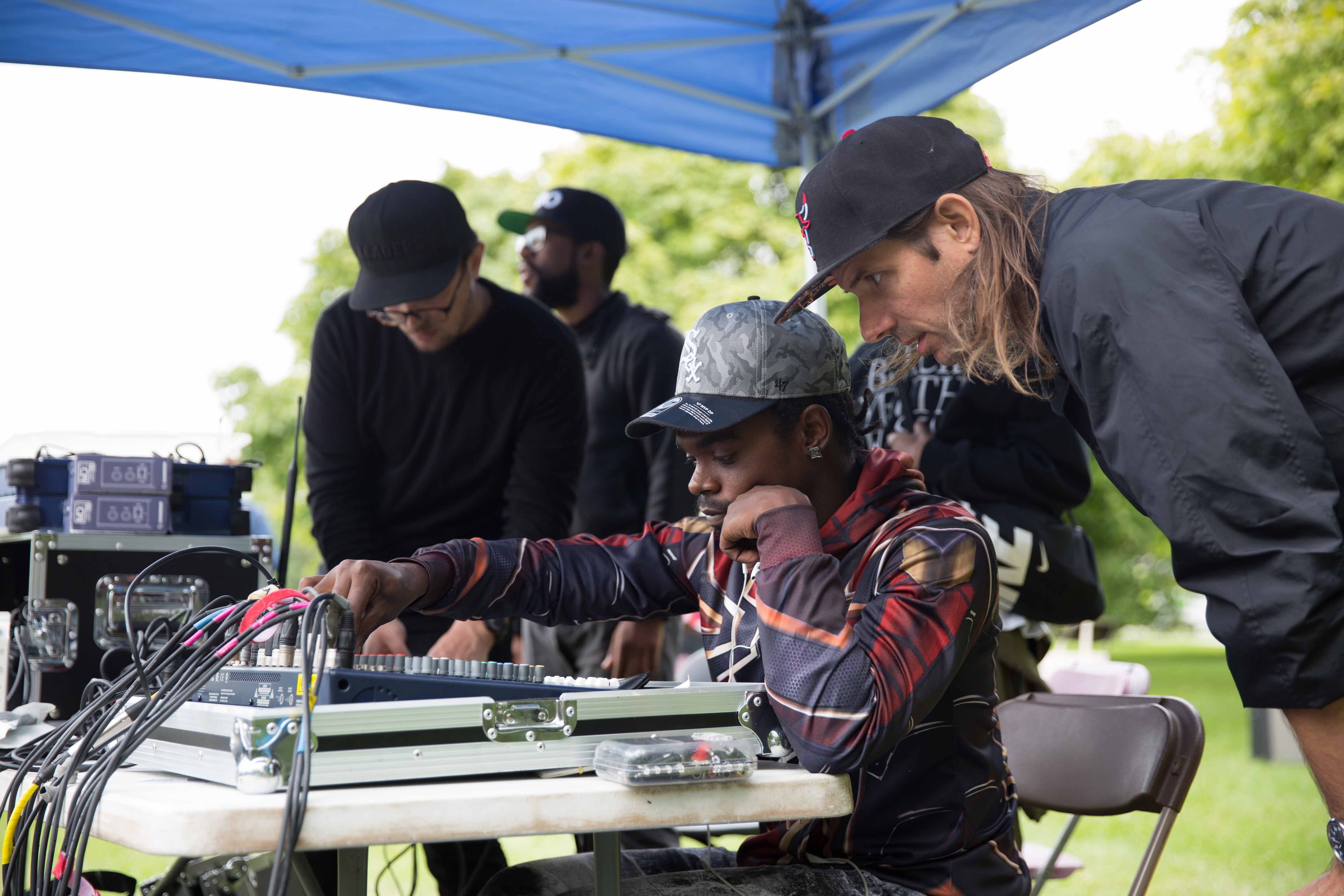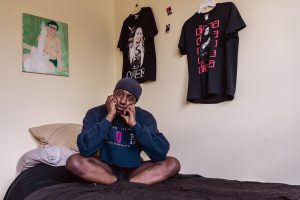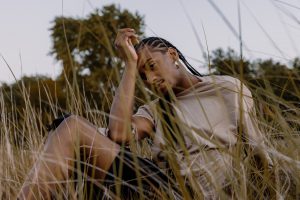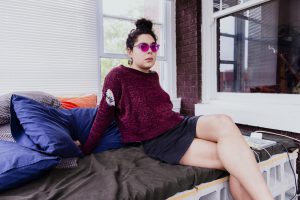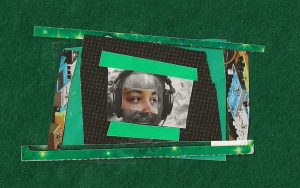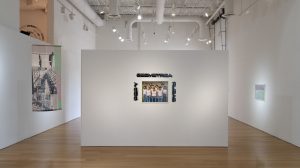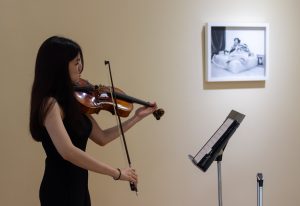“The ‘envisioning justice’ conversation is like – I don’t know, I think people try too hard to think about what it will look like.” Ryan Keesling had just pulled out his phone and was pointing at a photo on Free Write Art and Literacy’s Instagram page as he spoke. It was a flyer for YAS! Fest, the youth art showcase that took place in Millennium Park in September. On the flyer was an image of two DJs who had performed at the festival, Walter and Cortez, a.k.a. DJ 1Solo and DJ Tez. Keesling continued, “That’s not to say that people shouldn’t imagine. But, for me, I have to – I can imagine it, but also when I imagine it I don’t necessarily feel it. But when I see their faces and when I work with our students, both inside and outside, and I see them growing and I see them becoming aware of their abilities, and I see them being able to take control of their lives and I see them being happy and getting paid and doing what they love? That’s what justice looks like.”
Keeling is the executive director of Free Write — an organization that teaches art, writing, and music production classes in the Cook County Juvenile Temporary Detention Center (JTDC) — and Walter and Cortez are two of its alumni. Walter had been a DJ before entering the JTDC, but Free Write was Cortez’s first serious exposure to the craft. In the photo on YAS! Fest’s flyer, Walter looks down at the DJ mixer in front of him with headphones on and a hand poised to twist a knob or flick a fader. Cortez leans next to him, smiling.
Keesling co-founded Free Write with Daphne Whitington 18 years ago while finishing up a graduate degree in education at Northwestern. In its initial stages, it was a one-on-one tutoring program with a curriculum that emphasized reading for students in the lowest grade levels at the Nancy B. Jefferson School, the Chicago Public School that operates within the JTDC. Some students flew through the assigned books; but of the students who struggled to read at their grade level, Keesling recognized that they had literacy skills that the reading materials just weren’t accessing. Rather than continue teaching books that didn’t excite the students, the organization expanded its notion of literacy. Keesling turned to dictation and writing: students would tell him stories and he would write them down. Through reading the stories back, they could work on close reading and their fluency as storytellers in a vocabulary the students knew and used.
Free Write has continued to grow its programming through other similarly pragmatic decisions, as students’ needs arise. When they published an anthology of students’ poetry and prose, the Free Write teachers were asked, where are the pictures? Other teachers in the school started tapping Free Write’s shoulders when a student showed an interest in drawing, the next anthology included pictures, and eventually visual art was added to the curriculum. Free Write now has a staff of teaching artists who work with 50 students (roughly a quarter of the JTDC population) four days a week in 75-minute sessions. They offer classes in a variety of creative languages and technical skills: poetry, visual art, digital animation, music and audio production, DJing.
Outside the detention center, Free Write works to maintain a relationship with alumni who leave the JTDC. Their regular open mic event, Stomping Grounds Open Stage, is a partnership with the art-activism collectives Kuumba Lynx and Elephant Rebellion and takes place both in and outside of the detention center, cultivating a creative community across the JTDC walls. Three years ago, Free Write established Sound & Vision, a production company that provides audio equipment and technical support for music festivals and events. The skills required for this work are taught in the detention center, which gives students an opportunity for employment outside. Free Write alumni and staff participate in national conferences, academic panels, and public conversations about incarceration.
I met with Keesling at the Chicago Art Department, where Free Write has been a resident organization for the past three years, and we talked about how creative expression enables justice and what it takes to cultivate a free space within a locked facility. While still looking at the photo of Walter and Cortez, he continued, “So when I see joy, when I see success, and when I see freedom and mobility on the faces of the young people who are now young adults as they move out into the world, that’s what it looks like. That’s what justice looks like.”
In the following months, in addition to further reporting on Free Write Arts & Literacy, Sixty will publish a series that pairs poems written by youth participating in Free Write’s classes at JTDC with photographs by Chelsea Ross. This interview has been edited for length and clarity.
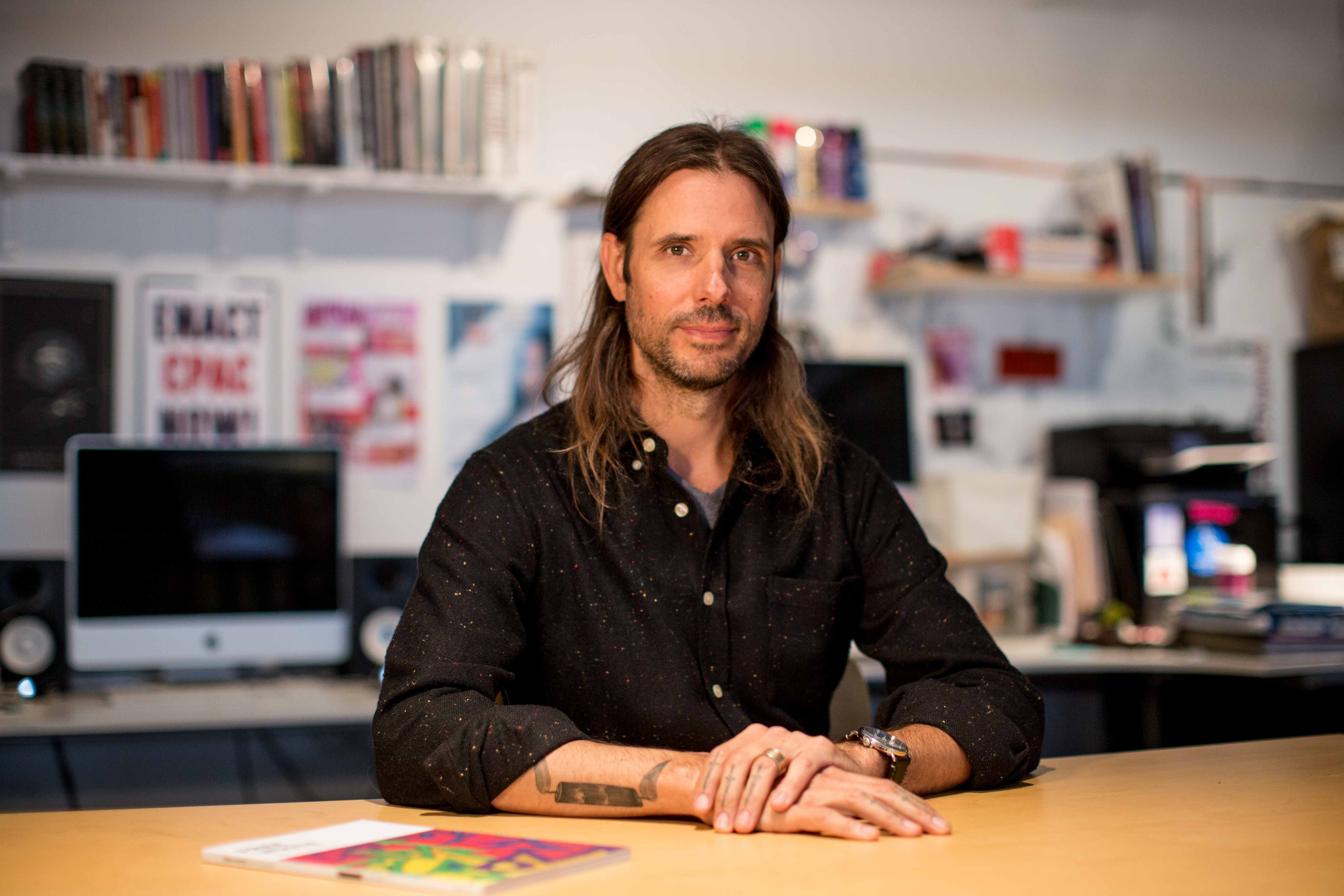
Sasha Tycko: On a personal note, what drew you to this work or continues to draw you to this work, 18 years out?
Ryan Keesling: Well, what drew me to it initially was how uninterested I was in being a public school teacher, and how clearly stifling it was to be just a teacher in a school system, regardless of what the system is — whether it’s CPS or private schools or anything, you know. I was looking at the prospect of being a teacher and just basically being told how to do things. Being overwhelmed with class size, being set up to fail, being discouraged from being creative, hitting glass ceilings and walls in all directions with ideas, and just being sort of stifled by the system.
So. This idea drew me to it because it was something I could build from the ground up, that addressed a very viable, concrete need, and that was a literacy-based intervention. And I’d be able to have relationships with people. The small group and the one-on-one work — that seemed like teaching to me, as opposed to just being dropped in a classroom and teaching to tests and whatever else the prospects were that I was seeing when I was finishing up grad school that really pissed me off.
ST: For Free Write’s classes, how does it work for people to participate? Do you have to recruit people, or are they generally enthusiastic to join?
RK: It’s non-compulsory, which sets it up for success in a place like a detention center and combination detention center/school, where it’s hyper-compulsory — all participation and all movement is mandated, right? So it’s not compulsory. Anyone can opt in and opt out … Nothing makes things move in that facility like the word of the kids. Everyone’s paying super close attention to what everyone else is doing in there, because it’s a hyper-compressed, hyper-restrictive environment, so everyone’s trying to see where the good stuff is.
Our programming speaks for itself and the young people that we work with are ambassadors for us and they will draw in new people who are interested, they will identify talented or struggling – or anybody who they feel like would benefit from the experience in our workshops. It’s very organic in that way. It’s not that we have to, you know, submit a list to the principal, or to the JTDC administration, and then they vet it. It’s very much word of mouth with our young people and a direct relationship with the day-to-day staff who do movement and are on the centers with our students. So it’s cool like that, and it’s light-hearted, and the fact that it’s an option for kids makes it even more appealing in a place where they are entirely, entirely shut off from choice, period.
ST: Art is really intimidating, so when new people come in, how do you or the other teaching artists make people feel comfortable being vulnerable or expressing themselves?
RK: They come in and they experience the space, first of all, and the space is a creative space. It feels that way when you walk in. It doesn’t feel the same as the other classrooms in the building, or even the hallway that you just came out of. Like you walk in and it’s got a different feel to it. And kind of like, how I said, too, they’re coming already having a knowledge of their peers’ experience with that, and they see a positive thing, and they want to get down with it. That sort of context is crucial to having someone come in and feel more comfortable at the very first day.
They can opt into different disciplines …We have really skilled teaching artists and people have been working in that environment for a really long time at this point, and they help to set the stage for that sort of experimentation and the vulnerability that’s happening around the table, but really it’s the young people themselves that create that environment. You know, the teaching artists can do whatever they think is right in order to create that, but if they haven’t built some trust with the young people who have been there for more and then somebody new comes in? That new person is not going to take the cue from the teaching artist, that new person is going to take the cue from their peers, and if it’s not feeling good then they’re not going to be forthcoming, or they’re going to be shy, or they’re not going to try something new. So, really, it’s about creating the environment and then letting the more established students sort of handle what it’s like to be open and vulnerable and collaborative and creative in that space.
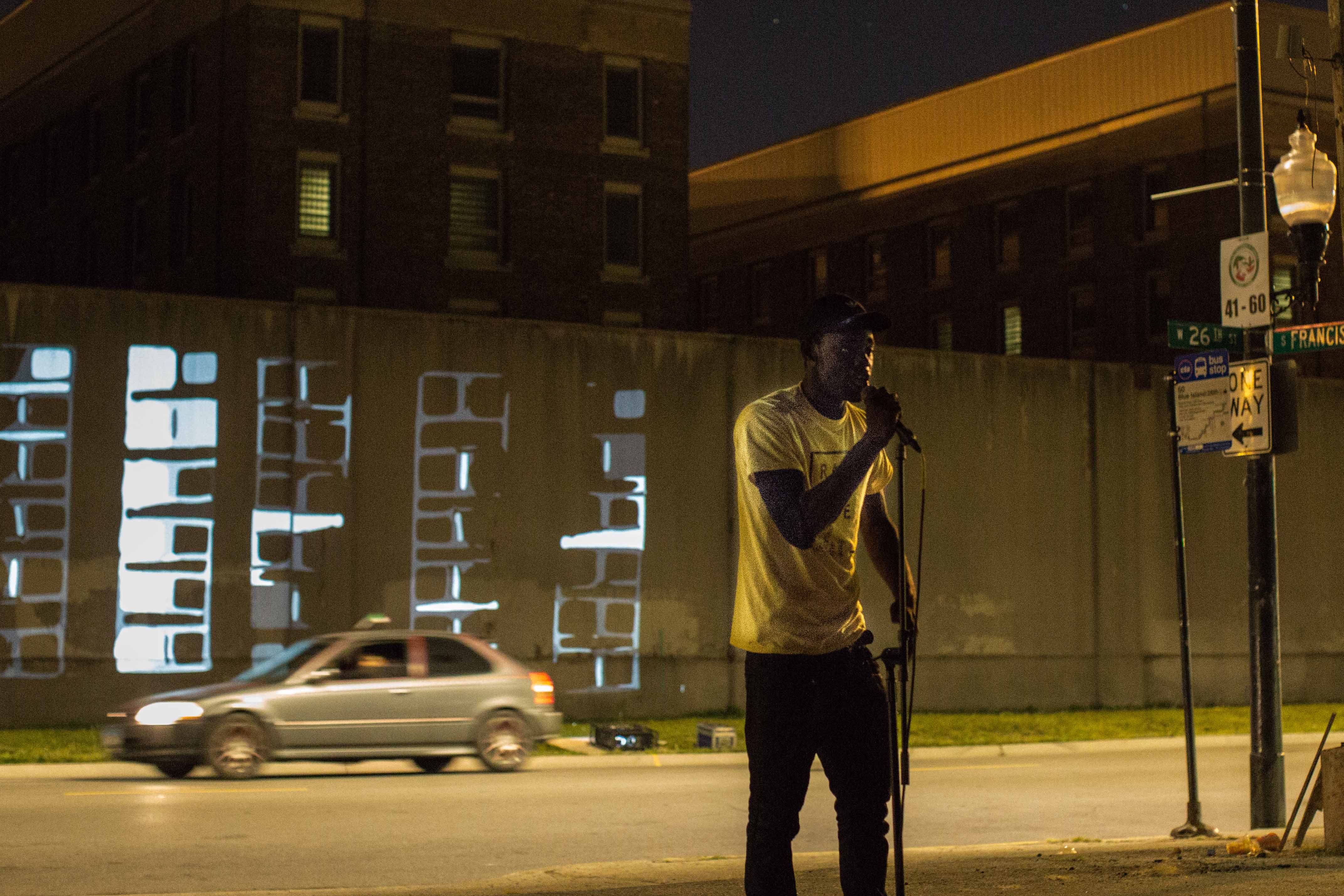
ST: What’s an example workshop structure?
RK: It would start with maybe some phone calls to make sure that the movement is going to happen. [laughs] So it always starts with a negotiation, or it occasionally starts with a negotiation with the staff, just to get the kids there, to make sure the right kids are on the list, and the right kids are coming down. That whole jail shit. It’s always that negotiation first. Which shows, number one, we’re there. Number two, we’re actively advocating for their movement to class, so that always makes a difference. And that also gives the staff that opportunity as well, to actively advocate for them to get to where they need to go. So that sort of adult support is the thing that gets them into the room, right? And that’s healthy to begin with, right?
We have a round table. It’s a group of seven, maximum, usually, for a couple reasons: for movement ratio — a safety and security issue — but also that’s a great class size for a workshop, right? So they’d sit around the table, they would do a check-in, so just a circular check-in, maybe with a prompt of some sort, maybe with a question, like “what’s one rose and one thorn.” You know, let’s talk about how you’re feeling. So everybody gets a chance to introduce themselves if they’re new or just reintroduce themselves if it’s important to the group and also check in about how they feel. They open their mouths and hear their voices at the table first.
So the next thing they would probably – well, it depends on the structure of the workshop and where this group is at with their projects, and where it falls in the curricular cycle, but they would often read something. Say they were in a poetry workshop. They would get a piece of writing. Everybody would read it together or take turns reading it or, in one way or another, experience it. The style of it is discussed — like the way it is written, the reason it was written.
Roger [Bonair-Agard] is the program director for creative writing, and his work, his poetry, is very much grounded in the very minute details that make up one’s movements through their lives. Right? So color, shapes, smells, things that people say, things that people act like, things that people look like — those things all give context to a person’s life, right? So he’s asking young people to look at their lives and think about what really was there, what really is here right now. To be able to access that, it takes some meditation, it takes some reflections, some encouragement to be able to get into the place where you’re like, “Okay, I see my block, I can smell my mother’s cooking, I can remember what it felt like in the sunshine, sitting on my front porch.” Those kinds of things, that make up a day in one’s life, right?
So that kind of experience will be encouraged and then writing will happen. And then, you know, sharing will happen. So there’s a community built around not only the shared writing — everybody at the table just going at it for five minutes without putting their pencil down — and then there’s the opportunity to share. It continues to create the artistic community and makes that space a vulnerable space but also a powerful space and a space not like anywhere else in that facility or really anywhere else that maybe they’ve been encouraged to participate in before.
ST: The tagline of Free Write is that its students are “authoring their own narrative.” Can you speak on that as it relates to the media representation of incarceration?
RK: Yeah. Well. [pauses] I mean, who’s better to tell their story than them?
ST: Right.
RK: You know? It’s funny how simple that is … Without their stories, there’s just other people talking about them. And those people are always just serving themselves, and, you know, distorting a narrative for the purpose of making our lives easier rather than actually listening to young people who have the experience and who are the experts because they have the experience.
So not only is it a means of changing public opinion and informing, you know, the broader discourse about what it means to lock kids up and the conditions that create that, it’s also a skill-building activity. They’re building communication skills in a way that will continue to allow them to capitalize on their experience in this scenario and be able to tell people, like, “You all think you know what this is, and you all think you know me, but you don’t. So I’m just going to go in on you because I have the perspective, I have the emotional engagement, I have the literacy skills, I have the artistic license and community, and I’m just going to tell you what this experience is, and whatever you think it is, you need to just put that down and listen to me.” So that’s the narration that we’re talking about—being the narrators of their own stories. You can’t let anybody else tell your story. And they’re hungry for the opportunity to be the ones who are in charge of their own stories.
ST: How explicitly or formally, do you talk about the system in the classroom?
RK: Explicitly. And formally. Yeah, I mean, the prison-industrial complex is a real conversation in the classroom. The conditions that give rise to that are real conversations. You know, there’s a trauma-informed way of talking about that. Because these kids are in jail. You know, they’re not distanced from this. You know, we can talk at this table about the prison-industrial complex and have all kinds of things to say about it, but you have to be careful with how you talk about prison. Because people are looking at big numbers. They’re looking at 45 years. It’s a different experience for that conversation when you’re actually looking at being in there for 45 years. So it’s a delicate balance … And there’s a lot of healing that happens when they see themselves as a part of a bigger context. There’s a lot of pain also, because they’re like, “Damn, I thought it was just this or that on the block, but really it’s this whole thing that’s been happening for hundreds of years, if not more, and I’m just a part of it right now and this is what it looks like.”
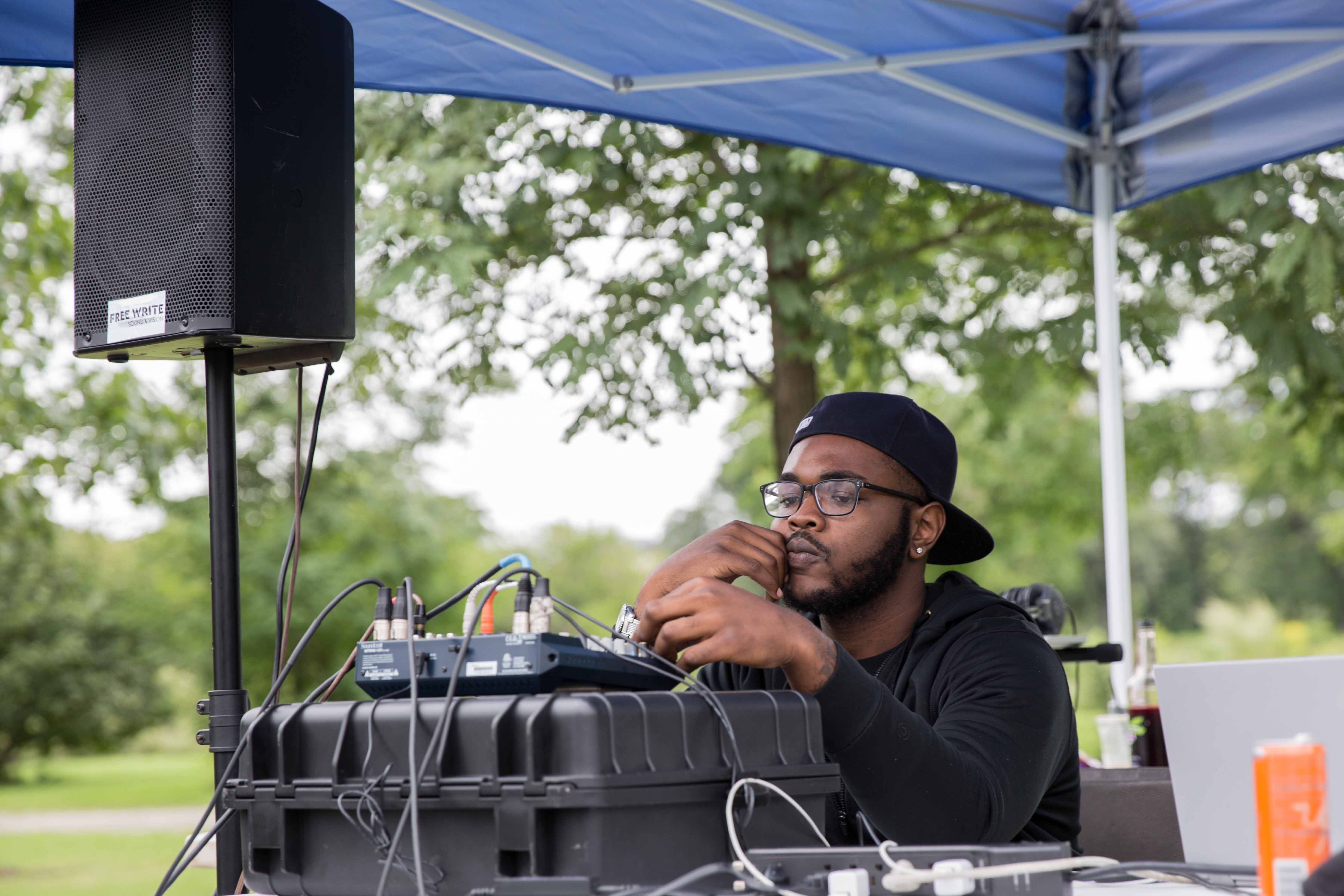
ST: How did the production company Sound & Vision get started?
RK: Sound & Vision started in response to the needs of a couple of our young folks who we re-encountered on the outside after we spent a lot of time with them inside. It also came about as a new sort of program that I was interested in doing, because those are my skills, as a technician and as a producer and as a DJ, and being involved for a long time in just event production and DIY kind of situations. I have a lot of skills that could result in money and employment and further skill-building in the arts industry. So I started to articulate that, but it was only after being prompted by young people who were like, “Hey, I’m out! What are we going to do?” Like, “Ohh. Alright, let’s figure it out.” So we started buying some equipment, reaching out to friends and colleagues in the field—you know, like other DJs, event producers, venues—and started to get work, started to get paid to show up with speakers and stack them up and, you know, make the event sound good, and bring the DJ equipment and, yeah, just all that backline tech end of things—that is often invisible in the arts industry, but is really what makes it work.
ST: I noticed that in the most recent anthology some of the poems had parts that were redacted. How does censorship happen at the detention center?
RK: We can’t publish anything without it going through the detention center. They have “gang specialists” [air quotes] who look at the stuff and look at any sort of signification and think about, like, “How is what this young person is saying going to affect another young person?” Because there’s real violence in play, there’s real “this person killed my friend, and I’m gonna kill them” kind of stuff. So those redacted poems in the anthology, one is called “Quiet on the Set,” and it was really about, like, staging a movie and this sort of stage directions leading into the first scene’s shot of this film or whatever. But “set” got to be interpreted as, like, “block,” and everything in it got to be interpreted as gangbanging. Which may or may not be true, because the coded language that they have access to is brilliant. And that whole lexicon is so rich and so vibrant and so in the moment. It can indicate violence and it can indicate heavy stuff.
But it’s also – They’re kids. They’re going to write about what they know. But it’s very coded and it’s very complex, and I feel like the way that it’s treated often doesn’t respect the complexity of it and is really just deaf to the complexity. So it’s heavy-handed. And I understand that, legally, they have to err on the side of caution in that respect, so it’s not that I don’t understand what they’re doing, it just often comes as heavy-handed. And those redacted pieces in that anthology, as an example, were super dope and we wanted to keep them and at least have it be experienced rhythmically or as bricks, you know, like in place of the words, and honor the poet for their work, but also acknowledge like, “This is something that we were told we can’t print. So here’s how we decided to treat it.”
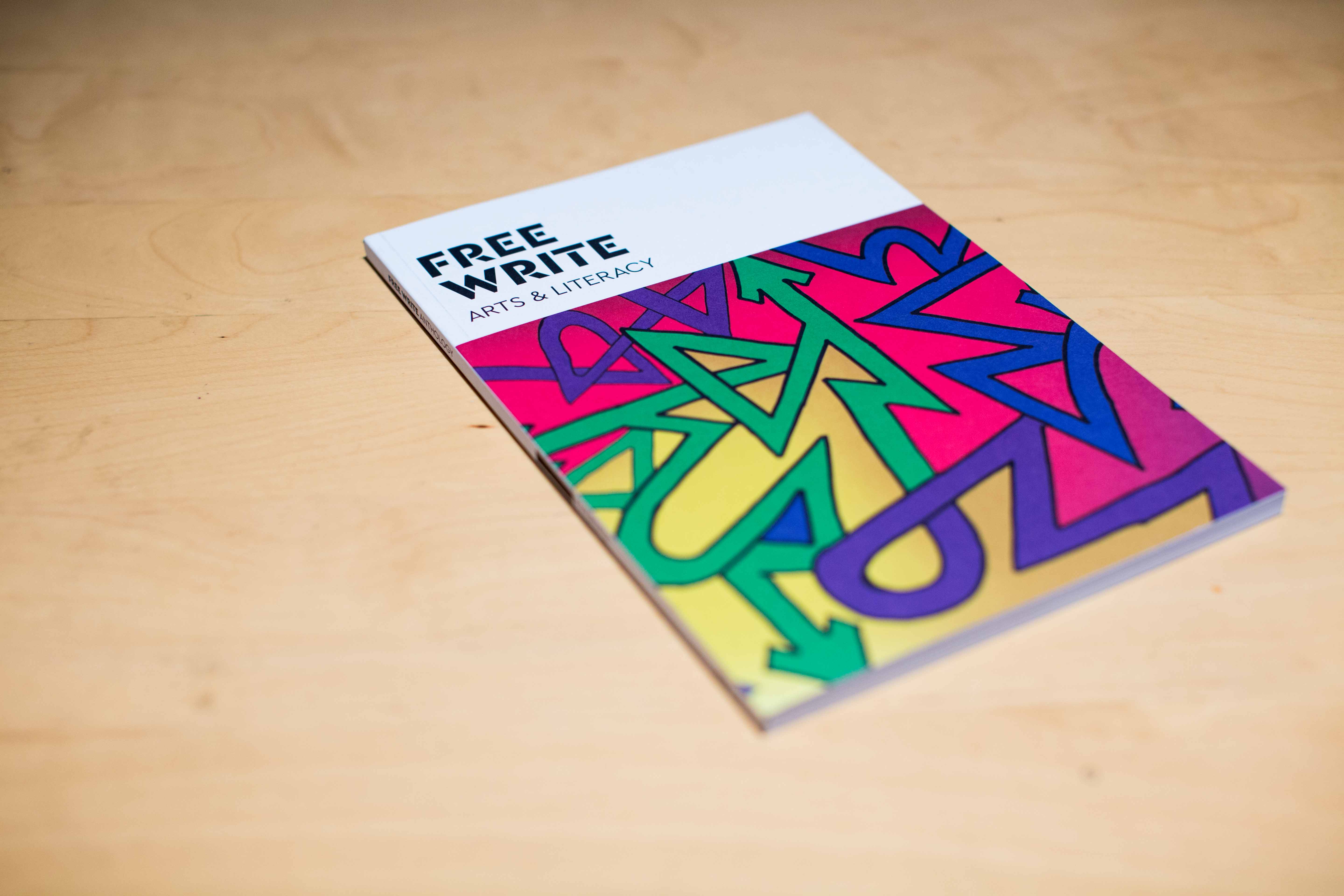
ST: What is it about this creative education, this creative space, about art generally, that enables the kind of work that you’re doing? In your experience, what is it about art that can enable justice and freedom?
RK: It’s going to be the stories of the young people and this experience that are going to change the way that the system functions and the relevance of its existence … I mean, that’s the power of art, is that it gives people multiple ways to express themselves, and everybody can access it at different points and combine skills to tell a story in a beautiful, engaging, interesting way. So I think that – I mean, it’s a hook programmatically, too, because, you know, they like it! They like it. It’s not science. It’s not social studies. They can come in and use these different tools. And art also has … they can make money doing art. And they are interested in that. They want ways that they can be legit with their ideas and build a life for themselves, outside of, like, things that will get them locked up. So not only is it powerful tools of expression and, you know, multi-disciplinary tools, but it’s also an opportunity for them to gain skills that they can use to go to the next [trails off] … go to school, do graphic design, be sound technicians, you know, be effective written communicators.
It has — for these students, in particular — they see both of those ways. They’re like, “This is fun. I like this. This is a great place to be. This community feels good. This art is hard sometimes, it’s exciting sometimes, it’s fun and it gets me going.” But also, “I can take this and I can do mixtape covers or I can design, I can do tattoos, or I can be an audio technician.” There are viable career options in it, which we know – like, our students are savvy and they see that immediately, and they’re like, “Oh shit, I know people are making money doing this, so I’m going to do this as well as enjoy myself doing so.”
Featured image: Ryan Keesling leans over the shoulder of Walter, a Free Write Sound and Vision technician, as they both look at audio mixer that sits on a table in front of them. They are outside, under a blue tent, where Sound and Vision is mixing sound for the FEAST festival that took place September 8. Photo by Chelsea Ross.
 Starting from the proposition that art-making is world-making, Sasha Tycko combines community organizing and curatorial work with writing, music, and performance. Tycko is a founding editor of The Sick Muse zine and an administrator of the F12 Network, a DIY collective that addresses sexual violence in arts communities. IG: @t_cko. www.sashatycko.net. Photo by ColectivoMultipolar.
Starting from the proposition that art-making is world-making, Sasha Tycko combines community organizing and curatorial work with writing, music, and performance. Tycko is a founding editor of The Sick Muse zine and an administrator of the F12 Network, a DIY collective that addresses sexual violence in arts communities. IG: @t_cko. www.sashatycko.net. Photo by ColectivoMultipolar.
